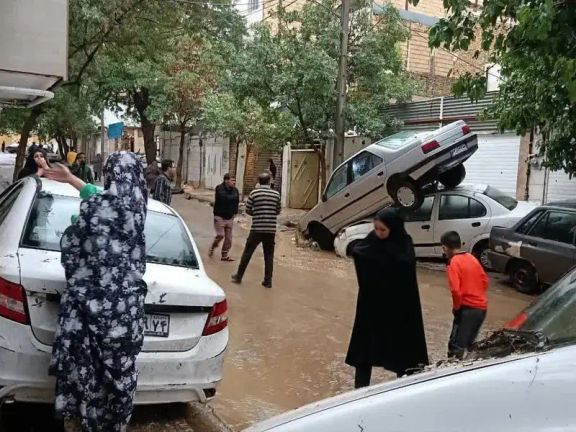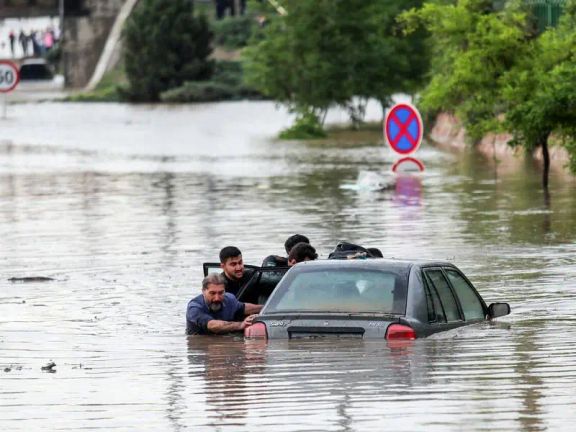Iran's Flood Catastrophe: Mismanagement Leads to Rising Death Toll

The death toll in Iran's northeastern Khorasan Razavi province has reached 12, as floods sweep through the region, exacerbated by government mismanagement and flawed urban planning.

The death toll in Iran's northeastern Khorasan Razavi province has reached 12, as floods sweep through the region, exacerbated by government mismanagement and flawed urban planning.
Officials have pledged accountability, but the public remains skeptical as the crisis exacerbates. The flooding, which began last Tuesday following intense rainfall, has inflicted severe damage across several areas in Mashhad and other provincial cities, with streets inundated and vehicles swept away by the powerful currents. Videos circulating on social media illustrate the chaos, with cars floating down waterlogged streets.
Criticism by citizens and experts has mounted against the "reckless and unprincipled environmental destruction" for construction purposes, and the ongoing mismanagement by city officials, pinpointed as the primary factors behind the flooding disaster in Mashhad.

An eyewitness in Seyedi district, in the southeast of the city of Mashhad, which suffered the most damage from the flood, stated in a video that city officials were responsible by building a wall in the neighborhood. “During the recent flood, this wall broke like a dam, causing the floodwaters to flow through the area,” he added.
The threat persists with meteorologists predicting more heavy rainfall, which could worsen the situation further.
Mashhad’s outdated and unstable urban infrastructure underscores the broader governmental failures that consistently endanger its residents.
Iran's second most populous city faces numerous challenges with deteriorating urban fabrics. These areas, which include old buildings and neighborhoods with inadequate infrastructure, have become worn due to insufficient attention and investment over time. Problems such as structural instability, lack of safety against natural disasters like earthquakes, and poor quality of life for residents have arisen.
The current crisis is reminiscent of the floods of April 2019, when heavy rainfall impacted vast areas across Iran, particularly in Golestan, Fars, Khuzestan, Lorestan, and several other provinces. During that period, Iran experienced three significant waves of rain and flooding over two weeks, affecting at least 26 of its 31 provinces. The catastrophic events resulted in the deaths of at least 70 people nationwide.